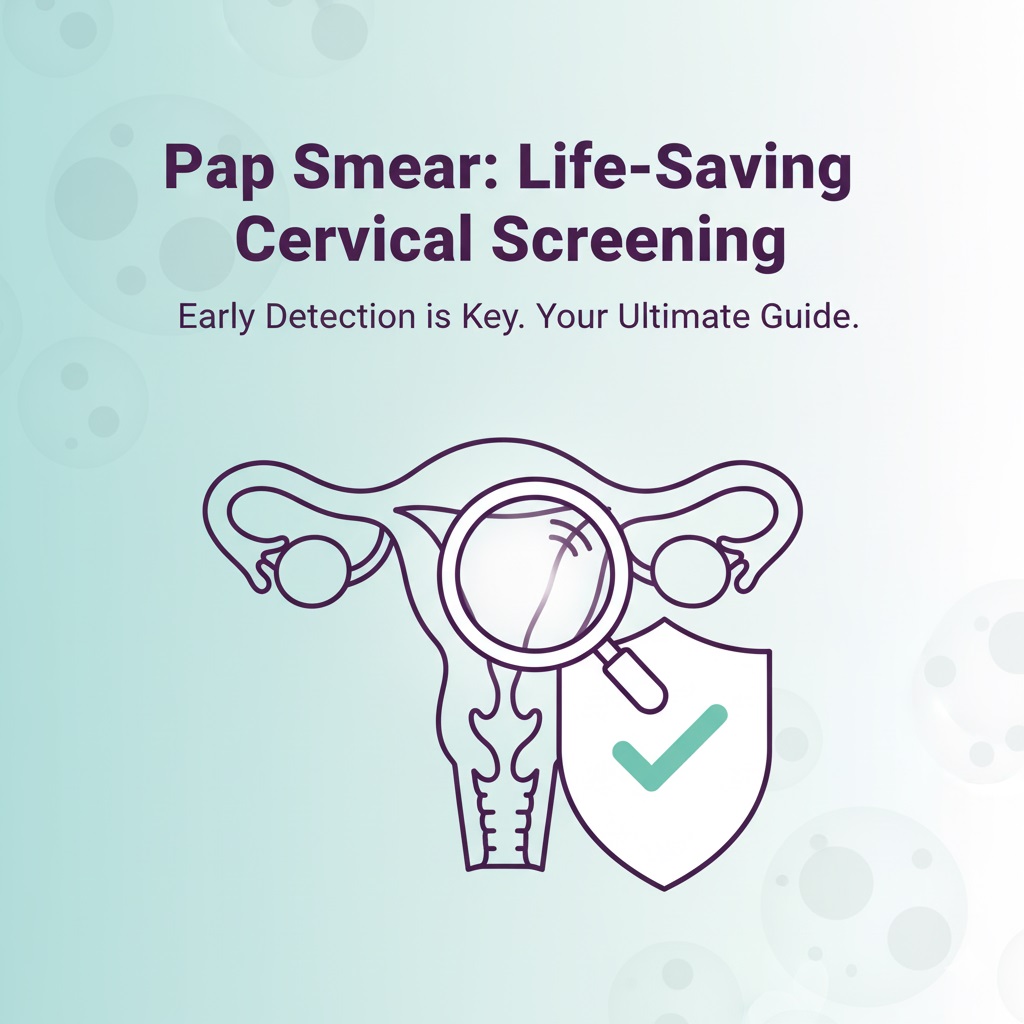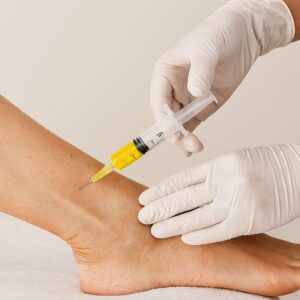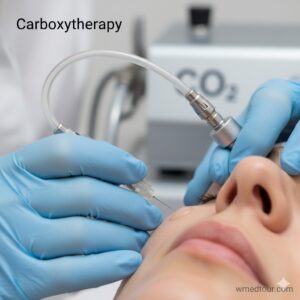Description
🌸 Pap Smear: The Definitive Guide to Life-Saving Cervical Screening
✨ Executive Summary: Why the Pap Smear is Essential
The Pap Smear, also known as the Pap test, remains one of the most vital screening tools in preventive women’s healthcare. It primarily detects precancerous cell changes in the cervix. This enables early intervention, which is simple and highly successful. Because most cervical cancers link directly to the Human Papillomavirus (HPV), regular screening is essential. Guidelines typically recommend starting at age 21. Therefore, integrating this quick, non-invasive procedure into your regular medical checkup represents a fundamental step toward long-term health and wellness. This holds especially true when pursuing preventive care abroad. Specifically, this guide explains the procedure, results, and modern co-testing methods.
For individuals seeking reliable gynecological services and professionals maintaining clinical standards, recognizing the Pap Smear’s efficacy is crucial. This simple, routine check successfully minimized cervical cancer mortality rates across developed nations. Consequently, understanding the test’s mechanics and diagnostic power empowers every woman to navigate her health journey proactively. Furthermore, high-quality medical tourism destinations ensure convenient access to this screening. We often package it with other vital services like fertility treatments or comprehensive women’s checkups.
🔬 Understanding the Pap Smear Procedure and Its Purpose
The Pap Smear is a quick procedure focusing on the cervix. The cervix is the lower part of the uterus that opens into the vagina. Specifically, the test involves collecting a cell sample to examine under a microscope for abnormalities. This cellular analysis meticulously looks for changes. Doctors typically call these changes dysplasia or CIN (Cervical Intraepithelial Neoplasia), which are often precursors to cancer. Furthermore, the test is crucial because early detection is key to successful treatment.
📅 Who Needs a Pap Smear and How Often?
Screening frequency depends heavily on your age and whether the Pap Smear combines with an HPV test (co-testing). Generally, the following guidelines apply:
- 👧 Ages 21–29: Doctors recommend a Pap Smear alone every three years.
- 👩 Ages 30–65: Co-testing (Pap Smear + HPV test) is the preferred method every five years. Alternatively, a Pap Smear alone every three years remains acceptable.
- 🚫 Over Age 65: Screening often stops if the woman shows adequate negative screening results over the previous 10 years. Still, exceptions exist.
Always consult your gynecologist about your specific screening schedule. This is vital, particularly if you have a history of abnormal results or specific risk factors. WMedTour connects you with specialists in our Gynecological Surgery Department who adhere to the highest international standards, ensuring your specific needs find fulfillment.
✅ Pros and Cons of Pap Smear Screening
The Pap Smear is invaluable for prevention. However, being informed means understanding both its strengths and limitations. Therefore, we present a balanced view:
Pros of Regular Screening:
- ✅ Unmatched Prevention: It efficiently detects cellular changes years before they can become invasive cancer.
- ✅ Simple and Quick: As an added bonus, the procedure takes only a few minutes with minimal discomfort.
- ✅ High Success Rate: Consequently, early-stage abnormalities the Pap Smear detects have nearly 100% cure rates.
- ✅ Cost-Effective: It is a globally accessible and low-cost preventive measure. This contrasts especially with advanced treatment costs (though costs vary—see our guide on Cancer Treatment Cost by Country).
Cons and Considerations:
- ⚠️ False Results: Like all medical tests, the results may show false negatives (missing an abnormality) or false positives (suggesting a non-serious abnormality).
- ⚠️ Discomfort: Some patients, however, experience mild pressure or cramping when the doctor collects cells.
- ⚠️ Requires Preparation: To avoid inaccurate results, patients must strictly abstain from douching, intercourse, and using vaginal medicines for 48 hours prior to the test.
❓ Interpreting Your Results: From Normal to Colposcopy
Receiving an abnormal Pap Smear result can certainly cause worry. Nevertheless, it rarely indicates cancer. Instead, it clearly signals the need for follow-up. Crucially, the result guides the doctor’s next investigative steps.
| Result Category | Meaning | Next Step |
|---|---|---|
| Negative (Normal) | No abnormal cells found. | Repeat screening in 3–5 years. |
| ASCUS (Unclear) | Atypical cells found, but the significance is undetermined. | Follow-up HPV testing or repeat Pap Smear in 6–12 months. |
| LSIL / HSIL (Abnormal) | Low-grade or High-grade precancerous lesions (dysplasia) found. | Mandatory follow-up, typically a Colposcopy with biopsy. |
If an abnormal result subsequently leads to a biopsy confirming a high-grade lesion, treatments like LEEP (Loop Electrosurgical Excision Procedure) are common and highly effective. Furthermore, knowing that this is fundamentally a screening tool—not a diagnostic one—significantly helps manage anxiety. Therefore, if you receive an abnormal result while traveling, our services help you access rapid diagnostic procedures in world-class medical centers. This includes countries like Turkey or Iran.
🗺️ Case Study: Maria’s Screening in Istanbul
Patient Journey: Timely Detection Abroad
Maria, a 42-year-old expatriate, chose a comprehensive annual checkup while on a short trip to Istanbul. She specifically requested the combined Pap Smear and HPV co-test, following our pre-travel checklist for Gynecological Procedures. Her Pap Smear returned an HSIL (High-Grade Squamous Intraepithelial Lesion) result, indicating a significant risk.
Immediately, the WMedTour coordinator arranged a specialist consultation and colposcopy at a JCI-accredited hospital within 48 hours. The subsequent biopsy confirmed CIN 2, which is a significant precancerous change. Due to the rapid and early detection the combined Pap Smear facilitated, Maria received a simple LEEP procedure before leaving Istanbul. She successfully avoided complicated, costly treatment and returned home assured the problem was fully resolved. Consequently, this scenario highlights how proactive screening is the absolute best form of preventative medicine, even during medical travel for services like aesthetic surgeries.
📚 The Future of Screening: Pap Smear and HPV Co-Testing
The Pap Smear undoubtedly remains the gold standard. However, modern medicine increasingly relies on co-testing. The HPV test specifically checks for high-risk strains of the Human Papillomavirus. This virus is the underlying cause of over 90% of cervical cancers. Since the virus must be present before cellular changes occur, screening women over 30 using both methods dramatically increases the likelihood of finding the highest-risk individuals early. Furthermore, this holistic approach to early detection parallels the innovation seen in other areas of oncology, such as CTC liquid biopsy techniques. Therefore, the combined approach offers superior peace of mind and protection.
Don’t delay this life-saving screening. For assistance with scheduling your Pap Smear and comprehensive women’s health checkup at a trusted global facility, visit WMedTour.











Reviews
There are no reviews yet.